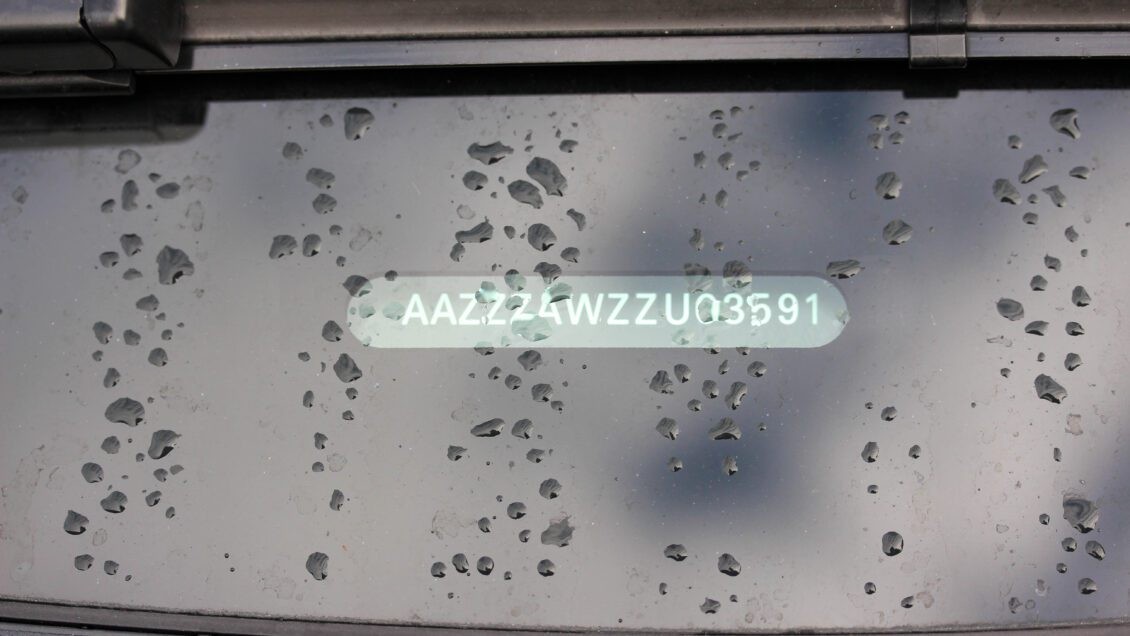Every car manufactured after 1981 has a Vehicle Identification Number (VIN), a unique 17-character code acting as the vehicle’s fingerprint. As an essential tool for car owners and mechanics alike, understanding the VIN can unlock a wealth of information about your vehicle’s history and specifications. One of the most common questions is, “What Number In Vin Is Year?” This article will delve into how to pinpoint the model year within your VIN and explore the other valuable details this code reveals.
Cracking the VIN Code: Finding the Year and More
The VIN is not just a random string of characters; it’s a structured code with each position holding specific information. Learning to decode it can be incredibly beneficial, whether you’re buying a used car, checking for recalls, or simply curious about your vehicle’s origins. Let’s break down what a VIN can tell you:
-
Country of Origin: The very first character of the VIN indicates where the vehicle was assembled. For instance, if the VIN starts with ‘1’, ‘4’, or ‘5’, your car was made in the United States. ‘2’ signifies Canada, and ‘J’ points to Japan, among many other country codes.
-
Manufacturer: The second and third characters identify the vehicle’s manufacturer. These codes can sometimes represent specific lines within larger automotive groups. For example, brands like Dodge and Jeep, now under Stellantis, have their own designated codes, as does Lincoln, a division of Ford.
-
Vehicle Attributes: Characters four through eight provide a detailed description of the vehicle. This includes information like the body style, engine type, and transmission.
-
Verification Digit: The ninth character is a security feature known as the “check digit.” This digit is the result of a complex mathematical formula applied to the rest of the VIN. It serves to verify the VIN’s authenticity and prevent fraud.
-
Model Year: Here’s the answer to “what number in vin is year?” – the 10th character of the VIN indicates the model year. It’s important to note that this is a single character, and the system uses a combination of numbers and letters, with some excluded to avoid confusion. Due to the limited number of characters and the need to represent many years, the system cycles, meaning the same character can represent different years decades apart. For example, the letter ‘R’ could represent either 2024 or 1994. Resources like VIN-to-year charts are essential for accurate decoding.
-
Assembly Plant: The 11th character reveals the specific factory where the vehicle was assembled.
-
Serial Number: The final six characters (12th to 17th) form the vehicle’s unique serial number. This number differentiates your car from every other vehicle of the same make, model, and year produced at the same factory.
Decoding the 10th Digit: Pinpointing the Model Year
As we’ve highlighted, the 10th position in your VIN is crucial for determining the model year. However, because of the cyclical nature of the VIN year coding system, it’s not always straightforward. The system utilizes numbers 1-9 and letters A-Z, excluding I, O, Q, U, and Z to avoid confusion with numbers or each other.
Here’s a simplified breakdown of how the 10th digit works:
- 1980-2000: Years in this range are represented by letters. ‘A’ corresponds to 1980, ‘B’ to 1981, and so on, until ‘Y’ for 2000 (skipping the excluded letters).
- 2001-2009: Years are represented by numbers 1 through 9. ‘1’ is 2001, ‘2’ is 2002, up to ‘9’ for 2009.
- 2010-2030 (and beyond): The system reverts back to letters, starting with ‘A’ for 2010, ‘B’ for 2011, and continuing. ‘R’ for example, represents 2024.
To accurately determine the year, especially when encountering letters that repeat across decades (like ‘R’), you might need to consider other factors or use a VIN decoder tool.
Unlocking More Vehicle History with VIN Decoders
While understanding the VIN structure is helpful, decoding it manually for all details can be complex. Fortunately, numerous online VIN decoder tools are available to simplify the process.
The National Highway Traffic Safety Administration (NHTSA) provides a free and reliable VIN decoder. By simply entering your VIN, this tool can provide a wealth of information, including:
- Year, make, and model
- Vehicle specifications (engine size, transmission, etc.)
- Manufacturing plant
- Safety features
Beyond basic vehicle information, VINs are also crucial for accessing vehicle history reports. Services like the National Insurance Crime Bureau (NICB) offer tools to check if a vehicle has been stolen. For more comprehensive reports on accidents, repairs, and title history, commercial services are also available.
Where to Find Your VIN
The VIN is typically located in several places on your vehicle for easy access and verification:
- Dashboard: The most common location is on the driver’s side dashboard, near the windshield. It’s usually visible from outside the car.
- Driver’s Side Doorjamb: You can often find the VIN on a sticker located on the doorjamb of the driver’s side door.
- Vehicle Title and Registration: Your VIN will also be printed on your vehicle’s title, registration documents, and insurance cards.
Conclusion: Your VIN – A Key to Vehicle Knowledge
Understanding the VIN, and specifically knowing “what number in vin is year,” empowers you with valuable insights into your vehicle. It’s more than just a serial number; it’s a key to unlocking your car’s history, specifications, and origin. Whether you are a car enthusiast, a prospective buyer, or simply a responsible car owner, learning to utilize your VIN is a practical skill. Take advantage of online VIN decoders to explore the hidden details within your vehicle identification number and drive with greater knowledge and confidence.

